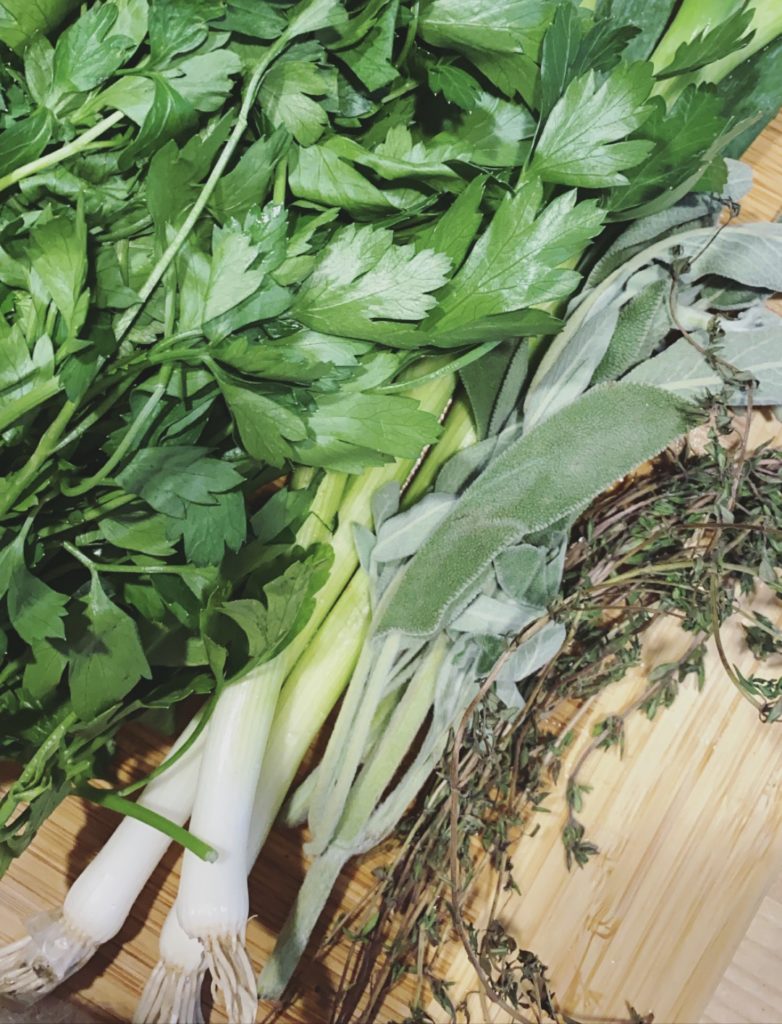how to store and freeze herbs
I love the flavor, color and utility that every herb can bring to a dish – herbs instantly change and elevate any recipe and they are a great way to rehabilitate refrigerator leftovers. I add them to almost every dish. Even so, I am ashamed to say how many times I have thrown away a half used bundle of parsley or cilantro because I simply forgot to use it in time. Over the past few months, I’ve been making an effort to store and prep my fresh herbs within a few days to a week of getting them from the market (depending on the herb). Now is the perfect time to learn how to freeze herbs and start prepping and storing our herbs to make every leaf count.
Here are a few of my favorite ways to store herbs:
Store in Water (or Oil)
First and most simply, you can freeze herbs in water. This tip came to me from my friend Negarin’s mother, who lived in Iran during many times of not being able to go to the grocery store. She has many other tips on prepping and storing veggies (but we will save those for another post!)
Start by removing the thick stems from the herbs. Finely chop your herbs and put them in individual ice cube trays, leaving a enough room to cover with water. If you don’t have ice cube trays, you can use ziploc bags. Put a serving of herbs in each small ziploc. Cover with water by about an inch and freeze – make sure herbs are covered and excess air is out if using a ziploc. If using ice cube trays, once frozen you can pop them out and store in a ziploc bag. I like these silicon ones that have covers.
You can do the above method with oil, but I prefer the oil method below. With this method, you can add the herbs anytime to soups, sauces, dressings, marinades seamlessly, although I would not recommend it for salads or garnishes.
This method is best for herbs like: parsley, cilantro, mint.
Make an Herb Puree
Similar to the method above, you will start by removing the thick stems from the herbs, and taking the leaves off. Admittedly, this can get a bit tedious which is why I like to put on my favorite podcast, call a friend, or soak in a few moments of meditative silence. You will want to gather about 2 cups of herbs. You can scale the ratio of olive oil to the amount of herbs you have (more olive oil for more herbs, less for less herbs).
Add the 2ish cups herbs to a food processor or blender like a Vitamix, and puree with about ¼ cup olive oil. You will likely need to scrape down the sides a few times before you reach a puree consistency. You can add a little more olive oil or water to reach this puree as needed. From here, follow the method above by adding to ice cube trays or ziplocs.
Herbs are then readily available to add to soups and sauces or stir into grains and pastas.
This method is best for herbs like: parsley, cilantro, thyme, oregano.
Make a Delicious Sauce
You likely know this method already, but it’s worth noting again. The more time upfront you spend prepping these sauces, the easier your meals for the week – or month will be. Here are a few of my favorites.
Pantry Pesto (specifically my Super Seed Pesto)
Chimichurri (my favorite is from my friend Jodi’s cookbook) but you can also find a million recipes online, and adapt for what herbs you have
Mint-Cilantro Chutney (I haven’t made this yet but this one looks good)
Or even an Herb Compound Butter (to stir into eggs, slather on bread, and more)
I also love this Herbed Tahini, I don’t usually freeze it but it never lasts longer than a week for me 🙂
Most of these sauces will last about a week in the fridge, or a few months in the freezer.
Drying Herbs
Last but not least, the final method you can deploy is drying your herbs. Of course, you can buy dried herbs at the store, and this is what I typically do but this is a good method to turn to if you have an excess of an herb that you are not going to use quickly (and honestly more delicious than your typical dried herbs).
Take about an inch bundle of herbs – tie with a string or rubber band and hang upside down. They will probably dry out in about a week. You can test and see if the leaves fall off and crumble easily. Use as you would any dried herb.
This works well with herbs like: thyme, oregano, and sage.
I hope this was helpful and will support you adding some flavor and green to your meals when your pantry gets down to grains and beans. I know that the more I get in the habit of adopting these methods the more delicious and easy it has become to elevate my meals in just a moment (while of course using every last herb)! Let me know if you have any other questions on how to store herbs and I will update the post 🙂

Comments 0